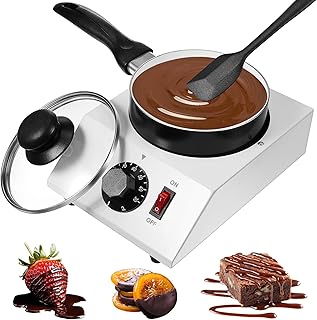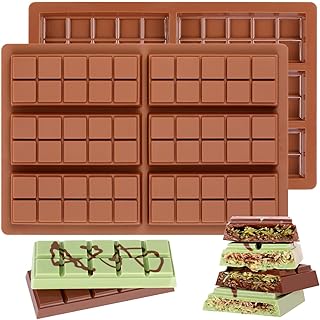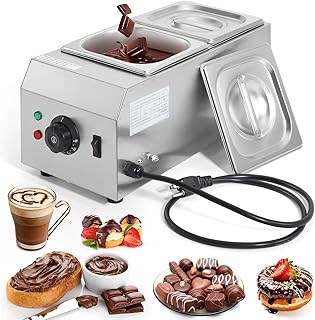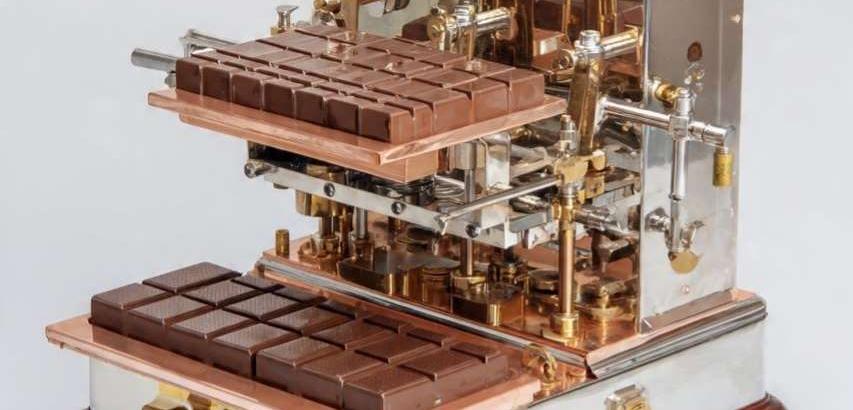A Chocolate Molding Machine is a specialized piece of equipment used in the confectionery industry to automatically or semi-automatically produce a wide variety of solid, filled, or hollow chocolate products. These machines transform tempered liquid chocolate into finished, demolded items with consistent shapes, weights, and a high-gloss finish, moving far beyond the capabilities of hand-pouring.
Core Function and Principle
The fundamental principle involves depositing precisely measured amounts of tempered chocolate into pre-formed molds, then subjecting them to a controlled cooling process to set the chocolate before ejection.
Types of Chocolate Molding Machines
Tempering Machines (or Continuous Tempering Machines):
While not molding machines per se, they are a critical upstream component. They melt chocolate and then cool it under precise, controlled agitation to pre-crystallize the cocoa butter into a stable Form V (beta) crystal structure. This is essential for:
A glossy, professional finish.
A firm, crisp snap.
Stable contraction for easy demolding.
Resistance to fat bloom.
Automatic Molding Plants:
These are large, fully integrated production lines, often 10-20 meters long, used for high-volume industrial production (thousands of pieces per hour).
Process: They combine tempering, molding, cooling, and demolding into one seamless operation. The molds are typically mounted on a continuous rotating belt or chain.
Key Stages in an Automatic Line:
Mold Warming: Molds are slightly warmed to ensure optimal chocolate flow and surface finish.
Depositing/Filling: The tempered chocolate is deposited into the mold cavities by a precision dosing head. For filled chocolates, the machine can first deposit a shell, then a center (like ganache, caramel, or nut paste), and finally a "bottom" layer of chocolate to seal it.
Vibrating and Tapping: The mold passes over vibrating tables to remove air bubbles and ensure the chocolate settles perfectly into every detail of the mold.
Cooling Tunnel: The filled mold travels through a multi-zone cooling tunnel with precisely controlled temperature and humidity. The chocolate is gradually cooled to set it completely.
Demolding/Ejection: After cooling, the mold reaches the demolding station. Here, the mold is inverted and flexed or tapped, causing the solidified chocolates to cleanly release and drop onto a conveyor belt for packaging.
Semi-Automatic Molding Machines:
Ideal for small to medium-scale producers, artisan chocolatiers, and R&D departments.
Operation: These machines automate specific labor-intensive steps, like depositing and vibrating, but require manual loading and unloading of mold sheets.
Example: A "single-shot" depositor that fills an entire mold plate with precise amounts of chocolate, which the operator then manually moves to a cooling cabinet.
Hollow Chocolate Molding Machines:
A specialized type of automatic machine for creating hollow figures like Easter bunnies or Santa Clauses.
Process: The machine deposits chocolate into a mold, then closes the two halves and spins them rapidly in multiple directions (a process called "spinning" or "centrifugal casting"). Centrifugal force distributes the chocolate evenly over the inner walls of the mold, creating a hollow shell. The excess chocolate is poured out before the shell sets.
Key Components and Features
The Mold: Typically made from polycarbonate plastic for its durability, flexibility (aiding demolding), and ability to produce a high-gloss finish. Designs can be incredibly complex and detailed.
The Depositor/ Dosing Pump: The heart of the machine. It can be a piston pump, a volumetric pump, or a rotary pump, designed to deliver extremely accurate amounts of chocolate to prevent under- or over-filling.
The Shaker/Vibrating Table: Uses electromagnetic or mechanical vibrations to consolidate the chocolate and eliminate air pockets, which is critical for a flawless surface.
The Cooling Tunnel: A long, insulated chamber with multiple temperature zones. It uses chilled air to gradually lower the chocolate's temperature, preventing thermal shock that can cause dullness or bloom.
The Control System: Modern machines are controlled by PLCs (Programmable Logic Controllers) with touchscreen HMIs (Human-Machine Interfaces). This allows for:
Precise control of temperatures, vibration intensity, and cooling rates.
Storage of recipes for different products.
Monitoring of production data and diagnostics.
Advantages of Using a Molding Machine
High Efficiency and Output: Capable of producing thousands of identical pieces per hour.
Unmatched Consistency: Ensures every piece has the exact same weight, shape, size, and appearance.
Labor Savings: Drastically reduces the manual labor required compared to handcrafting.
Product Versatility: Can produce a vast range of products, from simple solid bars to complex filled bonbons and hollow figures.
Superior Quality: When combined with proper tempering, it produces chocolates with a perfect snap, glossy sheen, and extended shelf life.
Limitations and Considerations
High Capital Investment: Automatic molding lines are very expensive, making them viable only for large-scale production.
Mold Costs: High-quality polycarbonate molds are costly, especially for custom designs.
Complexity and Maintenance: Requires skilled technicians for operation, maintenance, and cleaning.
Limited Flexibility: Switching between different products (e.g., changing molds and cleaning the depositor) can be time-consuming on larger lines.
The Chocolate Molding Machine is a cornerstone of modern confectionery manufacturing. It is a marvel of food engineering that transforms a viscous liquid into a perfectly formed, beautiful, and consistent consumer product. From the massive, fully automated plants that supply global markets to the semi-automatic machines that empower artisan creators, this technology is essential for meeting the demand for high-quality chocolate in its myriad forms.
 |  |  |
 |  |  |
